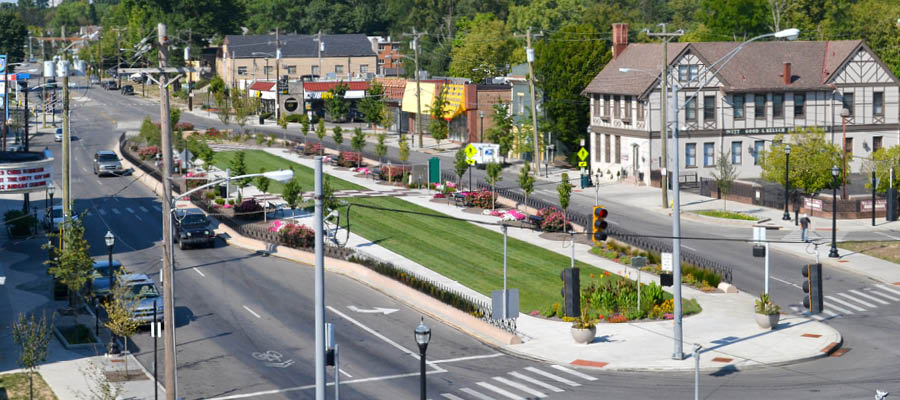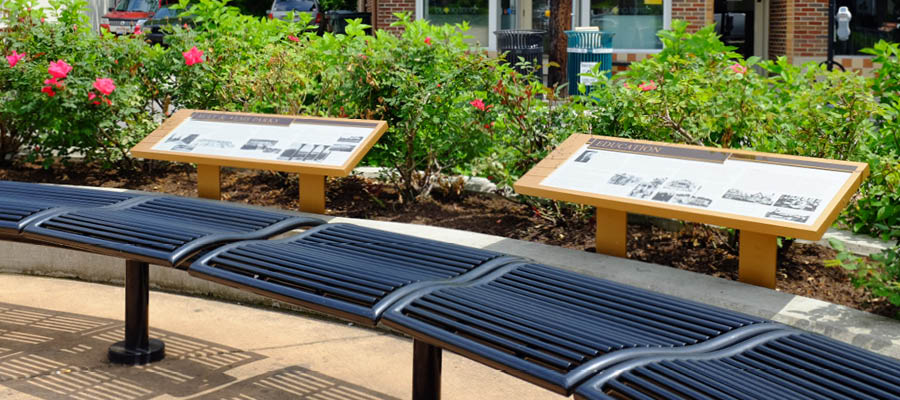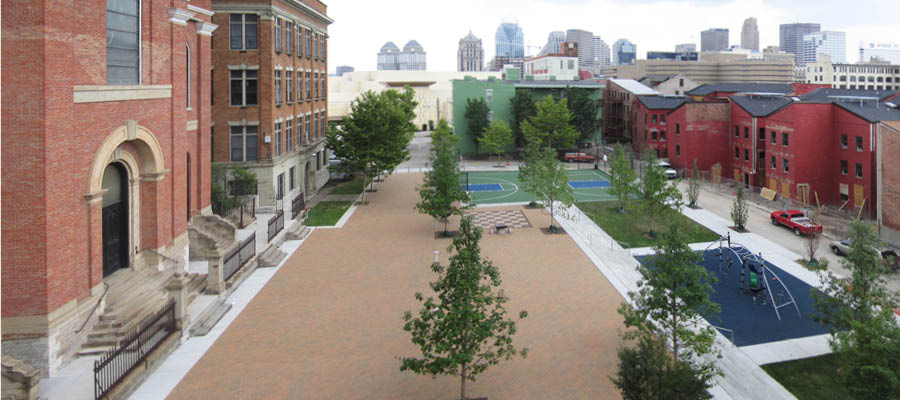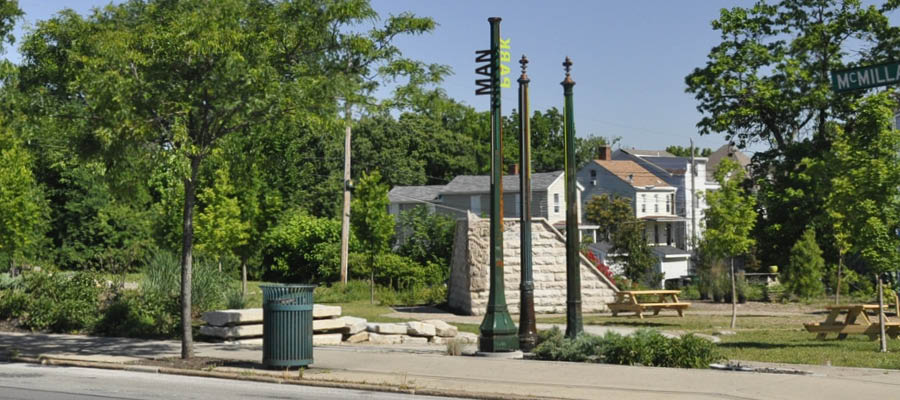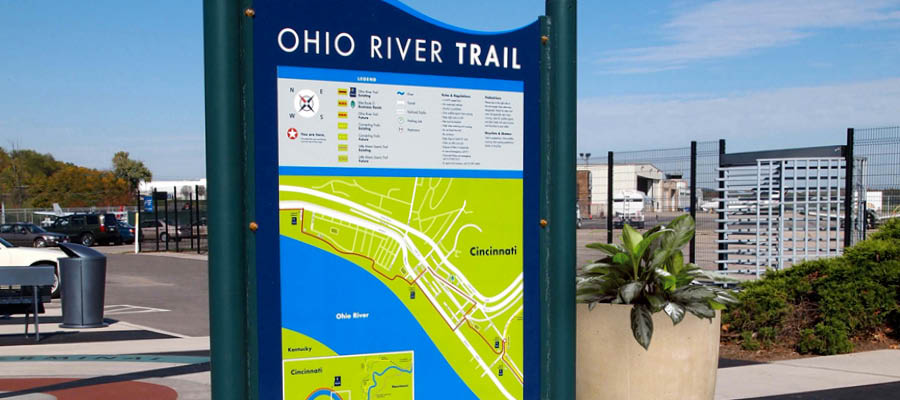Gateways, Greenways, Public Spaces
Cincinnati's streets and public spaces play an important role in the livability, vitality and character of our neighborhoods. The Division of Development Permits and Urban Design (DPUD) within the Department of Transportation & Engineering strives to promote the economic and social development of neighborhoods by transforming public spaces into the focal points of each neighborhood.
Public and private partnerships are crucial to the success of improving these highly visible corridors and public spaces. Community and City representatives work together to develop the designs, identify funding in partnership with the Department of Community & Economic Development, and maintain the rejuvenated spaces.
TPUD’s professional capabilities include transportation planning, architecture and graphic design. Improvements developed by TPUD may include:
- Traffic calming strategies that make streets safer for all modes of transportation
- Sidewalk improvements that create a uniform appearance and improve accessibility for all
- Identity elements such as gateways, historical markers, directional signage, and other types of environmental graphics
- Street layout design for travel and parking, crosswalk bump outs, and street realignments for improved public usage
- Sustainable construction practices and reuse of historic materials
- Lighting systems for neighborhood business districts
- Public parking lot infrastructure improvements and signage
- Street furniture installation, street trees and landscaping
- Utility undergrounding to improve accessibility and remove visual clutter, and
- The creation of new public space in the right-of-way, other city owned property, or property owned by recognized community organizations.

